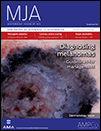Explaining the high prevalence of young-onset diabetes among Asians and Indigenous Australians
Rare and common genetic variants may interact with environmental factors to cause young-onset diabetes
While the prevalence of young-onset diabetes is rising worldwide, it is increasing particularly rapidly in Asian and Indigenous Australian populations. In Asia, one in five people with diabetes is diagnosed before the age of 40;1 in Australia, Indigenous Australians are six times as likely to develop diabetes during adolescence or childhood as Australians of European background.2 People with young-onset diabetes comprise a heterogeneous group, with aetiologies including classic type 1 diabetes, latent autoimmune diabetes in adults (LADA), type 2 diabetes, and the rarer monogenic maturity-onset diabetes of the young (MODY).3 Differentiating these subtypes is challenging, particularly in 20–40-year-old patients, among whom the proportions of the subtypes may vary by ethnic group.
Recognising MODY is important for guiding decisions about the need for or choice of glucose-lowering therapies, and when considering prognosis and family screening. It is particularly challenging identifying which Asian and Indigenous Australian patients, among whom young-onset type 2 diabetes is especially common, should be screened for MODY, and there is consequently a risk of underdiagnosis.
In this issue of the MJA, Davis and his co-authors4 report their attempt to ascertain the prevalence of MODY in a multi-ethnic Australian population drawn from the Fremantle Diabetes Study. The authors applied the MODY risk equation developed in Europe5 to patients diagnosed with diabetes before the age of 35. People with non-European ethnic backgrounds (Asians, Indigenous Australians, Eurasians) comprised 24% of the study population. Four of the 12 patients of European background deemed at risk of MODY carried a mutation in the glucokinase (GCK) gene. Conversely, the risk equation predicted that as many as 26% of patients of non-European background were at risk of MODY, but none had a known MODY-related gene mutation. However, it is important to note that only individuals with high risk scores were screened for mutations, so that the overall prevalence may have been underestimated.
There may be several reasons for ethnic differences in the detection rate of MODY. As recognised by Davis and colleagues, few investigations of the predictive value of the MODY risk equation have been undertaken in non-European populations. One group examined its performance in a multi-ethnic Singaporean population,6 reporting 77% sensitivity and 60% specificity for detecting genotype-confirmed MODY. However, the study imposed particularly stringent criteria when selecting their test population, such as negative autoantibody status and the absence of features of insulin resistance. The epidemiology of MODY genes in Asian and Indigenous Australian populations may differ from that of Europeans, and there are likely to be many unidentified genes and mutations of relevance. We have previously reported that mutations in the genes for hepatocyte nuclear factor (HNF)-1α and GCK are respectively found in 5% and 3% of Hong Kong patients with young-onset familial diabetes, but none have had mutations in the gene for HNF-4α.7 New candidate MODY gene variants are being identified with tools such as whole exome sequencing, but concerted efforts to establish larger databases and undertake careful pedigree analysis are still needed to ascertain their functional significance.
Although genetic factors may be more common in patients with young-onset diabetes, it is not a single gene disease; autoimmunity, rare gene variants, and common variants may be present in a single individual. Obesity is a major risk modifier that can render clinical diagnosis of the diabetes subtype difficult. Among Indigenous Australians, higher rates of obesity contribute to the elevated incidence of young-onset type 2 diabetes;8 metabolic risk factors for diabetes are typically present by the second decade of life.9 On the other hand, a large proportion of Asians with young-onset diabetes have a normal body mass index (BMI),1 perhaps partially explained by their predominantly visceral ectopic fat deposition. BMI thresholds may therefore need to be adjusted when predicting MODY risk for Asian and Indigenous Australian populations if better discrimination between MODY and type 2 diabetes is to be achieved.
Apart from interethnic differences in genetic predisposition and obesity, other factors — including intra-uterine nutrition, and environmental and socio-economic factors — may also contribute via epigenetic mechanisms to the “atypical” nature of diabetes in young Asian and Aboriginal people.10 A high prevalence of gestational diabetes among Asians and Indigenous Australians has been reported,11,12 and this may mediate an increased transgenerational risk of metabolic disease. Research is urgently needed to characterise the families of young patients with diabetes, as well as effective methods for screening for and preventing disease. Understanding interactions between genetic and environmental factors is particularly important for practice, given the recognised consequences of decades of hyperglycaemia and cardio-metabolic risk factors if they are not properly diagnosed, classified, and optimally treated.
Provenance
Commissioned; externally peer reviewed.
Competing Interests
No relevant disclosures.





